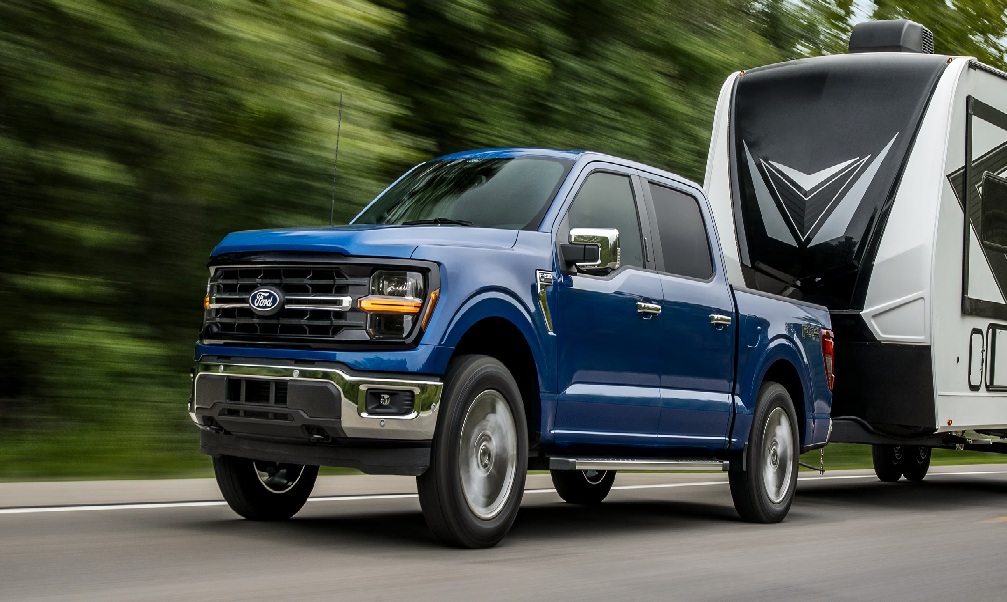The Ford Escape Plug-in Hybrid Electric Vehicle (PHEV) continues to be a popular choice for Canadian drivers looking to reduce their carbon footprint without sacrificing the versatility and comfort of an SUV. This eco-friendly vehicle’s advanced battery system is at the heart of its performance, efficiency, and appeal in the Canadian market.

Battery Specifications
The Ford Escape PHEV has a high-voltage lithium-ion battery pack, serving as its electric drivetrain’s primary energy storage system. Here are the key specifications:
- Battery Type: Lithium-ion
- Battery Capacity: 14.4 kWh
- Voltage: 355 volts
- Cell Configuration: 84 cells arranged in 14 modules
- Battery Weight: Approximately 200 kg (441 lbs)
- Battery Location: Under the vehicle floor, minimizing intrusion into cargo space
This battery configuration allows the Escape PHEV to offer a compelling blend of electric-only driving and hybrid efficiency, catering to the diverse needs of Canadian drivers.
Electric Range and Efficiency
One of the most critical factors for Canadian PHEV buyers is the electric-only range, especially given the country’s vast distances and varying climate conditions. The Ford Escape PHEV offers:
- Electric-Only Range: Up to 60 km (37 miles)
- Efficiency Rating (Electric Mode): 2.3 Le/100 km (102 MPGe)
- Efficiency Rating (Hybrid Mode): 5.9 L/100 km combined
The 60 km electric range is particularly noteworthy for Canadian drivers. It covers the average daily commute in most urban and suburban areas, meaning many Canadians can complete their daily driving routines without using gasoline, provided they charge the vehicle overnight.
Charging Options and Times
Charging flexibility is crucial for Canadian PHEV owners, given the country’s diverse living situations and infrastructure. The Escape PHEV offers several charging options:
- Level 1 Charging (120V):
- Uses standard household outlet
- Charging time: Approximately 10-11 hours for a full charge
- Ideal for overnight charging at home
- Level 2 Charging (240V):
- Requires installation of a home charging station or use of public Level 2 chargers
- Charging time: About 3.5 hours for a full charge
- Perfect for faster home charging or topping up at work or shopping centers
- Public Charging Stations:
- Increasingly available across Canada, especially in urban areas
- Charging times vary based on station capacity and current battery level
It’s worth noting that the Escape PHEV does not support DC fast charging, as its relatively small battery size doesn’t necessitate this feature.
Battery Performance in Canadian Climate
Canada’s diverse and often harsh climate poses unique challenges for electric vehicle batteries. Ford has implemented several features to ensure optimal performance of the Escape PHEV battery in Canadian conditions:
- Battery Thermal Management System: Helps maintain optimal battery temperature in both hot summers and cold winters
- Pre-conditioning: Allows drivers to warm up or cool down the battery and cabin while still plugged in, preserving battery range
- Cold Weather Package: Available for Canadian models, includes features like a heated steering wheel and heated seats to reduce the climate control load on the battery
Despite these measures, Canadian drivers should note that extreme cold can temporarily reduce electric range. However, the Escape PHEV ability to switch seamlessly to hybrid mode ensures efficient operation even in the harshest winter conditions.
Battery Longevity and Warranty
Concerns about battery longevity are common among potential PHEV buyers, especially given Canada’s climate extremes. Ford addresses these concerns with:
- 8-year/160,000 km Battery Warranty: Covers defects in factory-supplied materials or workmanship
- Gradual Capacity Loss Protection: The warranty also covers batteries that fall below 70% of their original capacity within the warranty period
This warranty offers peace of mind to Canadian consumers, ensuring that their investment is protected for the long term.
Environmental Impact and Recycling
As environmental consciousness continues to grow in Canada, the lifecycle of PHEV batteries is an important consideration. Ford has implemented several initiatives relevant to Canadian consumers:
- Battery Recycling Program: Partnership with Canadian recycling facilities to properly dispose of and recycle end-of-life batteries
- Second-Life Applications: Research into using retired vehicle batteries for stationary energy storage, potentially benefiting Canada’s power grid stability
These efforts align with Canada’s push towards a more circular economy and sustainable transportation solutions.
Cost Considerations for Canadian Buyers
The advanced battery technology in the Escape PHEV contributes to its higher initial cost compared to conventional models. However, several factors offset this for Canadian buyers:
- Federal iZEV Program: Offers up to $5,000 in incentives for eligible PHEVs
- Provincial Incentives: Additional rebates available in provinces like Quebec and British Columbia
- Fuel Savings: Significant reduction in fuel costs, especially beneficial given Canada’s often high gas prices
- Maintenance Savings: Reduced wear on mechanical components due to electric operation
When factoring in these incentives and long-term savings, the Escape PHEV becomes an increasingly attractive option for cost-conscious Canadian consumers.
Future Developments and Upgrades
As battery technology continues to evolve rapidly, Canadian consumers may wonder about future improvements to the Escape PHEV. While Ford hasn’t announced specific upgrades for the new model year, industry trends suggest potential developments in:
- Increased energy density, potentially leading to longer electric range
- Faster charging capabilities
- Enhanced cold-weather performance
Canadian buyers should watch for Ford announcements for mid-year updates or battery system improvements.
Practical Tips for Canadian Escape PHEV Owners
To maximize the benefits of the Escape PHEV battery system in Canadian conditions, consider the following tips:
- Regular Charging: Aim to charge nightly to maximize electric-only driving
- Use Pre-conditioning: Warm up or cool down the vehicle while plugged in to preserve battery range
- Optimize Regenerative Braking: Take advantage of this feature to recapture energy, especially useful in stop-and-go city traffic
- Plan Longer Trips: Use the hybrid mode strategically on highways to conserve battery power for urban driving
- Monitor Tire Pressure: Proper inflation is crucial for efficiency, especially in changing Canadian seasons
2025 Ford Escape PHEV: A Compelling SUV
The 2025 Ford Escape PHEV battery system offers a compelling package for Canadian consumers, balancing electric range, efficiency, and practicality. Its 60 km electric range covers most daily driving needs, while the hybrid system provides the flexibility required for longer journeys across Canada’s vast landscape.
The vehicle’s ability to adapt to Canada’s diverse climate conditions, combined with federal and provincial incentives, makes it an attractive option for environmentally conscious and cost-aware buyers. As Canada continues its transition towards electrified transportation, vehicles like the Escape PHEV play a crucial role in bridging the gap between conventional and fully electric vehicles.
The 2025 Escape PHEV demonstrates the Ford commitment to providing efficient, practical, and environmentally friendly transportation options for the Canadian market. As battery technology evolves, future models will offer even more impressive capabilities, further cementing PHEVs’ place in Canada’s automotive landscape.



